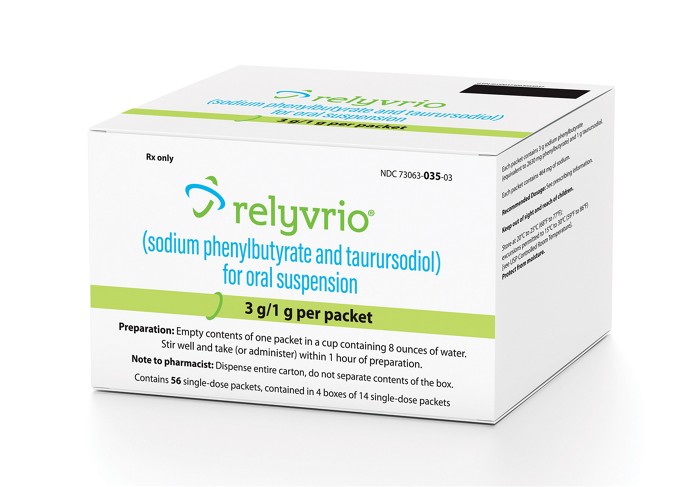Advertisement
Grab your lab coat. Let's get started
Welcome!
Welcome!
Create an account below to get 6 C&EN articles per month, receive newsletters and more - all free.
It seems this is your first time logging in online. Please enter the following information to continue.
As an ACS member you automatically get access to this site. All we need is few more details to create your reading experience.
Not you? Sign in with a different account.
Not you? Sign in with a different account.
ERROR 1
ERROR 1
ERROR 2
ERROR 2
ERROR 2
ERROR 2
ERROR 2
Password and Confirm password must match.
If you have an ACS member number, please enter it here so we can link this account to your membership. (optional)
ERROR 2
ACS values your privacy. By submitting your information, you are gaining access to C&EN and subscribing to our weekly newsletter. We use the information you provide to make your reading experience better, and we will never sell your data to third party members.
Neuroscience
Novartis and Sangamo partner on zinc finger therapies for autism and intellectual disability
The firms are developing a modified version of the gene-editing technology to boost the expression of genes
by Ryan Cross
July 30, 2020

Novartis is the latest big drug firm to strike a collaboration with Sangamo Therapeutics. The two firms will develop therapies based on Sangamo’s zinc finger technology that targets genes linked to autism spectrum disorder, intellectual disability, and other neurodevelopmental disorders. Sangamo will get $75 million from Novartis as part of the licensing agreement, and could earn up to $720 million more from development and commercial milestone payments.
During the ongoing profusion of young biotech firms developing therapies based on CRISPR gene-editing tools, Sangamo has made a name for itself as a more experienced partner with an older technology: zinc finger proteins. Since 1995, the firm has engineered and optimized these human proteins to bind any conceivable sequence of DNA, which can then be cut, silenced, or activated with the addition of a second protein attached to the zinc fingers.
While biotech upstarts have received a lot of investor attention, several large companies have turned to Sangamo’s zinc fingers. Biogen, Gilead Sciences, Pfizer, Sanofi, and Takeda Pharmaceuticals have all struck partnerships with the firm—the sole proprietor of zinc finger technology—in recent years.
Novartis and Sangamo are developing a particular version of the technology called zinc finger protein transcription factors (ZFP-TFs), in which the zinc fingers direct an artificial transcription factor to a particular gene and turn it on. Earlier this year, Biogen and Sangamo announced that they would develop ZFP-TFs that turn off the production of disease-causing proteins in Alzheimer’s and Parkinson’s diseases. Pfizer and Sangamo are taking a similar approach to develop ZFP-TFs for amyotrophic lateral sclerosis (ALS) and a rare neurodegenerative disease called frontotemporal lobar degeneration.
Many firms investing in genetic therapies have focused on rare genetic diseases caused by a single, well-defined mutation, or they are making big bets on well-studied genes linked to neurodegenerative diseases. In choosing to focus on autism and related neurodevelopmental disorders, Novartis is carving a different path.
“We are getting to the point where the most prevalent mutations and most obvious mutations are either already in our pipeline or are hugely competitive,” says Ricardo Dolmetsch, head of neuroscience research at Novartis. “In an effort to go beyond that, we decided to try a slightly different approach.”
Few groups developing genetic therapies have ventured into the field of neurodevelopmental disorders. The causes of some of these conditions are devilishly complicated, with many different genetic mutations playing parts in the condition. In instances where a single gene plays a major role, it is often too large to easily replace using a viral-based gene therapy—such as the one employed by Zolgensma, the gene therapy for spinal muscular atrophy marketed by Novartis.
Since we all carry two copies of our genes, Dolmetsch says, Novartis looked for disorders that could be treated by boosting the one good gene, rather than trying to fix or replace broken genes. Novartis and Sangamo will use custom ZFP-TFs to target the error-free genes implicated in neurodevelopmental disorders and boost their expression. “We are not editing the genome,” Dolmetsch adds. The goal is simply to get the good gene to produce twice as much RNA, and thus twice as many proteins, hopefully restoring them to normal levels.
Novartis also plans to target genes that have “the potential to regulate lots of other genes,” Dolmetsch explains, which may help broaden the use of the therapies. However, he emphasizes that Novartis is focusing on “really, really severe, disabling” neurodevelopmental diseases, “where if you have the gene it severely impairs your quality of life.”
The company is not making ZFP-TFs for people with more mild forms of autism, he adds, “who are quite functional and who actually have a lot of skills that other people don’t have.” Dolmetsch also believes that the risk-benefit ratio would not be suitable for these people, since gene therapies do carry risks.
Novartis and Sangamo are working on three different genetic targets. Dolmetsch suggested the targets might not be disclosed until an experimental ZFP-TF is ready for Phase II clinical trials, in about 4–5 years.



Join the conversation
Contact the reporter
Submit a Letter to the Editor for publication
Engage with us on Twitter